“So on my second main phase, I’ll sacrifice Wall of Blossoms, return Recurring Nightmare to my hand, and bring Deranged Hermit back to the battlefield. Pass to you.” “On your end step, I cast Fact or Fiction.”
On any given month, odds are good that this conversation happened between two Premodern players. They’ll have battled it out with the best that Magic had to offer at the turn of the millennium, and in my biased opinion, the best card frame to ever grace the game. Premodern is the home for the middle era of Magic card design. If you’re looking for a new take on old cards, a thriving webcam community, or a shelter from FIRE design mistakes, then Premodern just might be what you’re after.
Premodern’s card pool stretches from Fourth Edition to Scourge, essentially until the modern card frame debuted in 8th Edition. The format was created in 2012 by Martin Berlin, who was looking for a new way to play cards from this bygone era. Berlin maintains the small but thoughtful ban list, which is partly based on community input. There are thriving online communities found all over the world, with players seeking each other out for gameplay and discussion.
Today, we’ll get into the basics of Premodern; covering everything from gameplay, format identity, cost, culture, and how to get started.
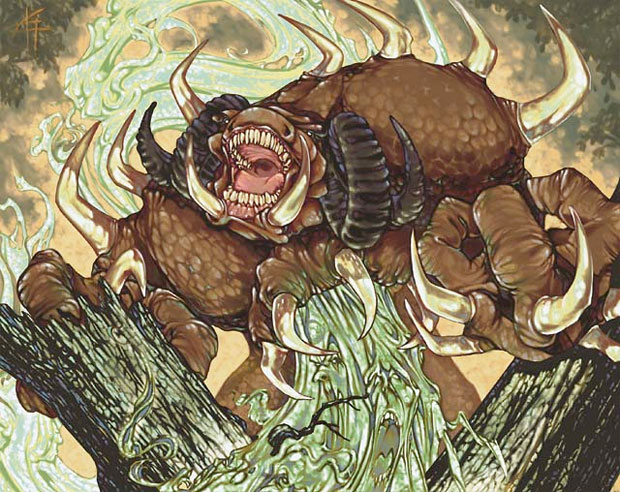
Spiritmonger by Glen Angus
Format Identity
Premodern captures a unique part of Magic’s history, from 1995-2003. While that date range might look arbitrary at first, it’s the era right between Modern (2003-Present) and Old School (93-94). This avoids things like ABUR duals, The Tabernacle at Pendrell Vale, and Mirrodin Block Affinity cards. This represented a large formative experience for Magic. In between flipping Chaos Orbs and casting planeswalkers, a lot happened for the game.
One of the biggest defining factors of Premodern comes from the fact that Brainstorm and Force of Will are banned. Those two cards are arguably the most defining characteristics of Legacy gameplay. It can lead to “Blue Soup” decks, which use Brainstorm, Force of Will, and fetch lands to to filter through cards with unparalleled efficiency. That triumvirate gives them a permanent, commanding position in Legacy. The decision was made early on that they wouldn’t be in Premodern, giving it more of a distance between it and Legacy. This is similar to the way in which fetch lands aren’t found in Pioneer, to distance it from Modern.
It’s worth mentioning that Brainstorm and Force of Will do act as safety valves for Legacy, keeping combo decks in check. For Premodern, we rely on cards like Daze, Duress, Cabal Therapy, and in some cases, Foil. These answers scale in relation to how broken the combo decks can be. For instance, Reanimator looks a lot different when instead of putting Griselbrand into play, you’re choosing Phantom Nishoba or Akroma, Angel of Wrath. This also helps diversify the metagame, steering the format away from being run by blue-based tempo decks.
Premodern creatures have fewer abilities than they do today, so the balance of power tilts more towards spells. It’s undeniable that creatures have gotten better and better over the years, so newcomers to this era may be surprised by how weak the creatures may look. Less Questing Beast, more Ravenous Baloth. That’s not to say that they feel weak to play, though, it’s merely the standard of a different time.
Mana fixing is also an interesting topic for Premodern. Fetch lands don’t have dual lands to grab, so Wooded Foothills will only get you a basic Forest or Mountain. That removes a lot of problems that the Fetch-Dual combo causes in other eternal formats. All ten Pain Lands are accessible as well, so they round out the majority of the format’s color fixing. In a way, a Pain-Fetch mana base keeps a lot of decks honest, and keeps them from trying to run too many colors against aggro strategies. While it’s not usual to see some two-colored decks running tap lands like Coastal Tower or Urborg Volcano, they’re resigned to midrange or control decks. Premodern also has a host of powerful monocolor and utility lands, such as Gaea’s Cradle, City of Traitors, and Wasteland. Often resigned to Legacy, Premodern gives these lands another area to shine.
For fans of Magic art, Premodern offers an exciting proposition: basic lands are playable. By that, I mean that there isn’t a competitive edge to running snow-covered lands. Cards like Arcum’s Astrolabe and Ice-Fang Coatl have pushed regular basics out of eternal formats, leaving many players wishing for more diversity in choices. However, there’s a wide selection of basics for Premodern players to choose from.
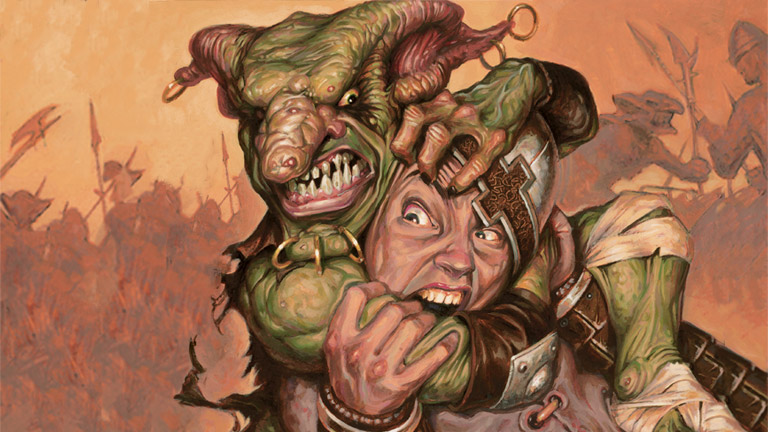
Goblin Piledriver by Matt Cavotta
The Premodern Metagame
The Premodern metagame is wide and diverse, with a bunch of different directions you can take. TC Decks is the main place to find decklists, and a quick glance will show the wide breadth of the format. For instance, in September’s Monthly Tournament, the top 16 featured 14 different archetypes. While you’re not guaranteed 50-50 matchups across the board, you do have a big menu of decks to choose from.
At time of writing, the format is being held up by the conventional pillars: Aggro, Combo, Control, and Midrange in between them all. Burn, or “Sligh”, is the top dog for Aggro, followed by Goblins and Monoblack Aggro. These decks are looking to take advantage of slower, multicolor decks with painful mana bases. Midrange is led by The Rock (Golgari Midrange), and various flavors of Recsur (Creature Toolbox) and Machine Head (Rakdos Midrange). These decks employ cards like Cabal Therapy, Survival of the Fittest, and Phyrexian Arena.
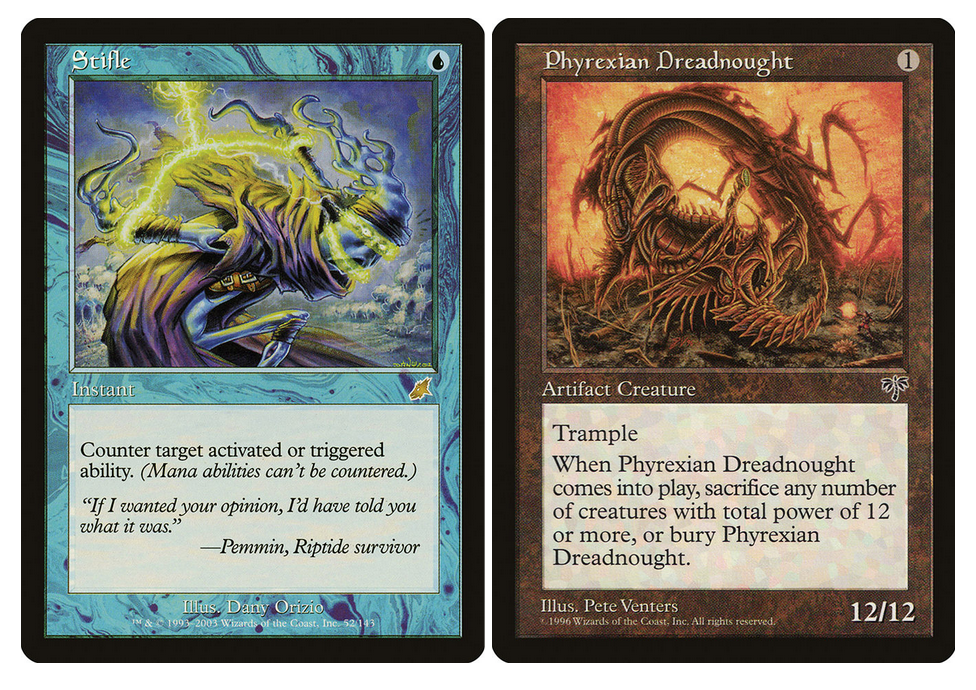
Landstill is the main control deck in Premodern, and arguably the best deck in the format right now. It uses cards like Standstill, Decree of Justice, and Counterspell to grind out victories. Combo is a wild ride in Premodern, with everything from Full English Breakfast (Creature Toolbox), Terrageddon (Mass Land Destruction), to Stiflenought. There are far too many decks to list here, but you get the idea. The format is far from solved, and it’s a beautiful thing.
There can be some misconceptions about Premodern gameplay, so they’re worth addressing here. Namely, they relate to playability of old Standard or Extended all-stars. For instance, “Fires” was the deck to beat back at Pro Tour Chicago in 2000, where it took half of the Top 8 slots. But though it was dominant at the time, that format had a smaller card pool. Premodern has a much deeper card pool, so Fires doesn’t burn like it used to. It’s not usual for new players to want to build the deck they played back in the day; so before you go out and buy cards, it’s worth checking to see if it’s as good now as you remember it.
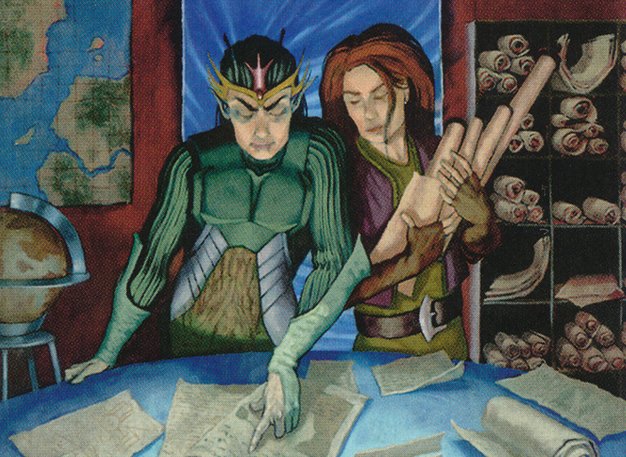
Accumulated Knowledge by Randy Gallegos
Where to Play
Before the pandemic shut down in-store Magic everywhere, Premodern was being played online. The community was running webcam tournaments out of this Facebook group for at least two years prior to the shutdown. When I played my first monthly this Spring, I found my opponents to be seasoned veterans of webcam Magic, who were very accommodating to my initial, clunky setups.
It’s very easy to get started playing monthlies. All you need to do is build a deck, join the Facebook group, and register during the appropriate window. The time frame to sign up for the tournament is roughly the last ten days of a month, and you’ll be queued up as soon as the month turns over. There is no registration fee, and no prizes. This ensures that there is zero incentive to cheat. Games are run using current rules, meaning London Mulligans and no damage on the stack (sorry, Mogg Fanatic). Players are divided up into seven or eight-person pods, doing round robin play.
You’re guaranteed at least six matches, before the best players move on to the elimination rounds. It’s up to players to schedule out time with each other to get their matches in, and they report results via a Google Sheet. Since this is all handled through Facebook, players can create group messages where they iron out dates to play. When signing up, players are placed in pods of people that have similar time zones. This is a lot like a MTGO league, which is much more flexible for people with varied schedules. You don’t need to block out a Saturday afternoon. For being run independently, the Premodern organizers do a great job at keeping the show on the road.
There are other independently-run events for Premodern, but they generally use the main Facebook group as an advertising board. TC Decks shows results of various online or regional events, such as in Europe, although they’re often smaller in scale. Nevertheless, there are plenty of options for people to get their fill.

Wasteland by Una Fricker
Cost of Entry
Generally speaking, Premodern is less expensive than other eternal formats. Many format staples have seen frequent reprints, making them fairly accessible; it isn’t mandatory to get the original printing of a card. Plenty of players will try to complete their decks in old border versions, to maximize their sense of immersion in the format. But if you already have a $100 playset of Polluted Deltas from Khans of Tarkir, but not from Onslaught, don’t sweat it.
While most of the cards in the format are accessible, the elephant in the room is the Reserved List. There are Premodern decks that run Mox Diamond, Gaea’s Cradle, or Gilded Drake, which cause severe price bumps. However, they are by no means essential to be competitive. Of the decks I mentioned in the metagame, not many of them rely on Reserved List cards. But if they do, odds are good that there are cheaper options available, which brings us to our next point: that beautiful, beautiful gold border.
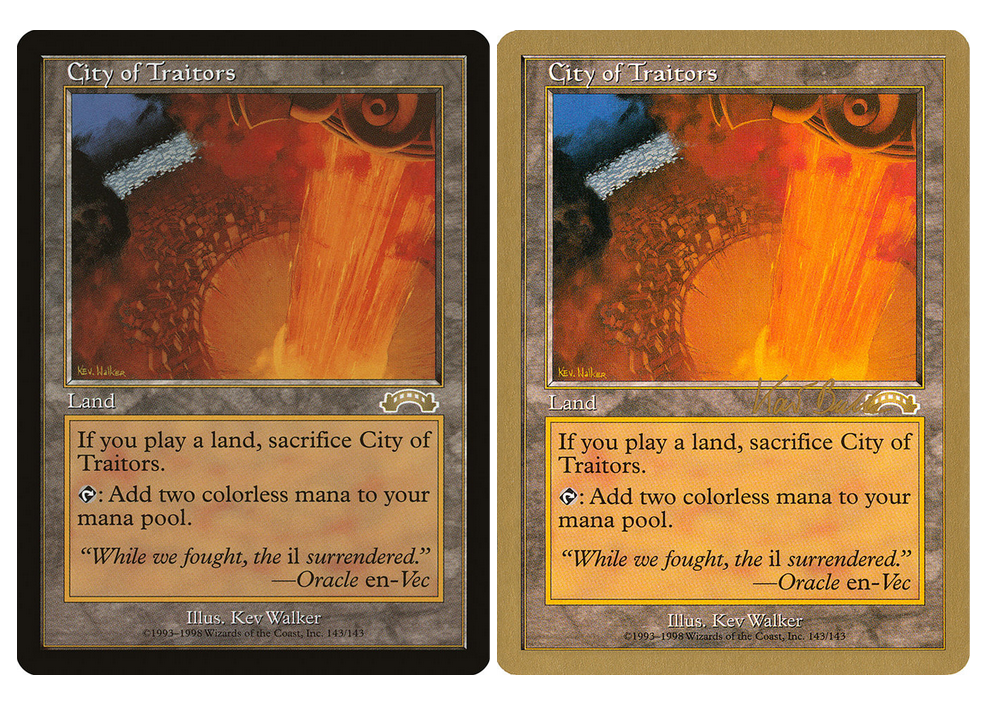
For the online Premodern monthlies, gold border printings are legal. These cards are from the discontinued World Championship Deck series, which aren’t legal in WOTC-sanctioned events. However, this is a massive advantage for Premodern players. Instead of spending $800 for a playset of City of Traitors, you can get them in gold border for $24. $180 Survival of the Fittest is banned in Legacy, but you can have a gold border playset for about $60.
It’s almost as if you’re hopping into a time machine, and getting the price that you saw in an old copy of Inquest Magazine. There are retailers that sell these cards, long sought as inexpensive alternatives for Commander or Cube players. You’ll still find a few expensive cards, such as Gaea’s Cradle at $130. But for the most part, gold border is the on-ramp to a lot of otherwise expensive black border cards.

Mother of Runes by Scott M. Fischer
Culture
Premodern is a great place to be playing Magic right now. The fixed card pool means that your deck never rotates, nor is it pushed out by incoming designs. Over the past few years, we’ve seen how new designs have repeatedly upended formats, from Standard to Vintage. The community has been feeling the strain. It has led to a pervasive conversation about bannings, to solve for these newer design mistakes. But in Premodern, all of our tools are laid out in front of us, so there aren’t any new surprises. This leads to very little ban discussion. The metagame ebbs and flows, but otherwise it is what it is. The silence is golden.
As for players, people are just happy to play. Sometimes, I’ve had opponents turn their webcams up to their faces before or after a match. That simple gesture has led to some great conversations, adding to the human element of playing Magic. As someone who really misses “the Gathering” aspect, it has helped fill the hole that playing from home brings. If Magic Arena is the place for grinding the ladder against anonymous people, Premodern is the place for grabbing your drink of choice and talking through old sideboard cards from Torment.
By all measures, Premodern is still pretty niche, but that doesn’t stop its fans from talking it up wherever they go. This year has seen a surge in interest for the format, with monthly tournaments reaching record numbers. In the current December tourney, I’m one of over 100 people registered, from all around the world.
This year saw the launch of Premodcast, a show dedicated solely to Premodern content. The format’s home page also features an active blog, putting out a variety of content for players. The format may be small right now, but the passionate player base is helping it grow by the day. Whatever happens with modern Magic doesn’t mean much for Premodern; the format will keep going as long as people still enjoy playing the cards they have. As for me, I have plenty more mistakes to make while casting Cabal Therapy, so I won’t be done with Premodern any time soon.
Travis is a Virginia-based player and writer, who has been turning things sideways since Starter 1999. He primarily plays Commander, Pauper, and Legacy, and has a passion for introducing new players to the game. When he isn’t making people pay the Thalia tax, he can be found mountain biking or playing the guitar. You can follow his exploits here on Twitter and Instagram.

